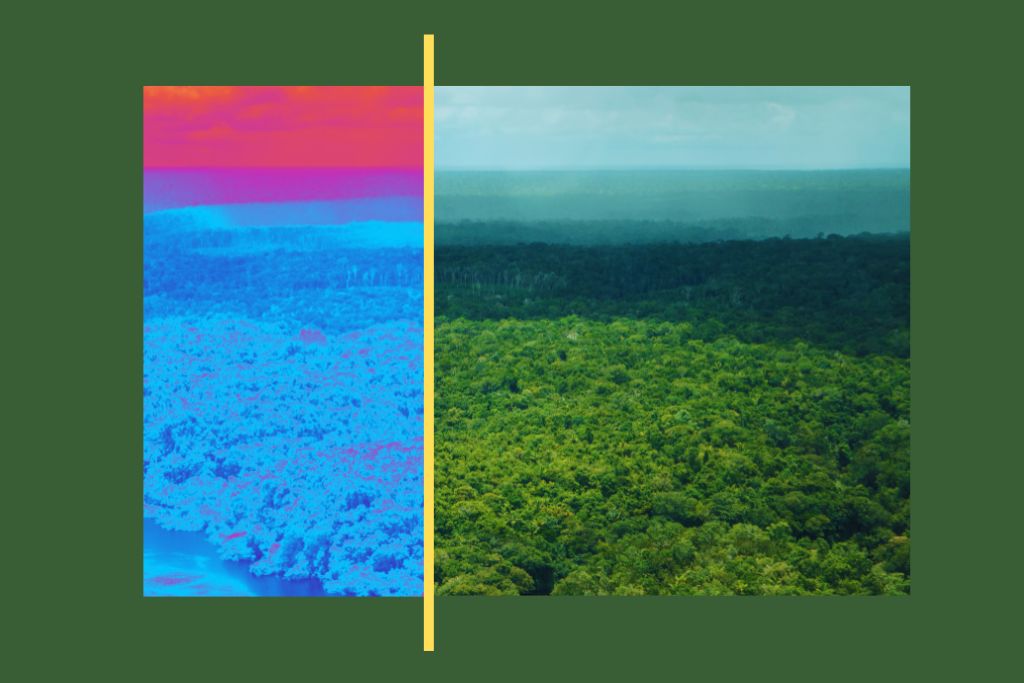Amazon Deforestation is Down. Here’s Why.
Elections, new government policies at the national and sub-national level, increased law enforcement, and technological advancements have contributed to climate gains in Brazil, Ecuador and beyond.

For several years, headlines about Amazon deforestation have all been bad. But in 2023 the script has been flipped and the good news keeps on coming.
Good news in Brazil where deforestation in the Amazon declined 66.1 percent compared to last August. It’s the lowest level for the month of August since 2018 and it continues a downward trend. For the first eight months of the year, the rate of deforestation is 48 percent lower than the same period in 2022.
Good news in Ecuador where voters passed a historic measure to end oil drilling in a part of the Amazon that is a biodiversity hotspot and home to Indigenous groups. It’s being touted as a victory for democracy and grassroots organizing.
But these good news developments are hardly irreversible, and they follow years of destruction to the world’s tropical forests thanks to logging, agriculture, and development. To add context, I put some questions to Jason Gray, Project Director of the Governor’s Climate and Forest Task Force, a coalition of 43 states and provinces from 11 countries working to prevent deforestation. (This is the first of two conversations: Next time we’ll focus on the not-so-good news around carbon offsets.)
Q: What do you make of the reduction in deforestation in Brazil’s Amazon and what else should we know?
Jason Gray: This year has seen some really sobering news on the tropical deforestation front. The World Resources Institute reported that the world lost more primary rainforest in 2022 than in 2021. So, to start to see some bright spots like Brazil is incredibly heartening. To me, this shows that governmental action is key to reversing deforestation. It is too early to know what specific policies are driving these reductions, but a return to implementing existing laws, supporting conservation efforts, and ensuring better protection and enforcement around Indigenous territories and protected areas all seem to be having a role in the results.
Q: The Brazilian government knows about these gains thanks to satellite data from Brazil’s space research agency. Have technological capabilities to observe forest activity also increased?
Gray: Yes, for sure. Advancements in both technological capabilities and in continuing access to these tools has been really important for tracking forest cover, deforestation rates, and increasingly, impacts from degradation. Improving our collective ability to monitor and measure our forests at scale and at lower cost—including our ability to attribute changes to various activities, such as clearings for cattle ranching and agriculture, fire-induced change—is critical to assessing progress and helping us double down on more sustainable land-use management policies.
We held a fascinating workshop between geospatial technicians from 26 GCF Task Force member states and remote sensing providers at UCLA earlier this summer, and a key take away for me was that these advanced tools are most valuable when they can meet the decision-making needs of governments, communities, and others who are using them.
Q: Brazilian President Luiz Inacio Lula da Silva recently also officially recognized several Indigenous territories, granting them legal protection as reservations to defend against invasions by illegal loggers, gold miners and cattle ranchers. Why is this important, and how might it relate to Lula’s ambitious goal to eliminate deforestation in the region by 2030?
Gray: Study after study have demonstrated that Indigenous territories are the best protected and serve as one of our most important, last carbon sinks. But those same territories are under threat of incursion and illegal land grabs. Providing official recognition and recognizing legal rights to protect Indigenous territories is one of the most powerful tools to ensure long-term protection of tropical forests and the rights of Indigenous peoples.
I am really watching to see how the Brazilian national government, hopefully in coordination with GCF Task Force member states, will work in partnership with Indigenous Peoples to ensure near- and long-term resources to defend these territories. That’s something we at the GCF Task Force are very focused on with respect to engagement between subnational governments and Indigenous Peoples and local communities.
Q: Elsewhere, voters in Ecuador recently voted to halt oil drilling in an important corner of the Amazon. What’s the significance of that vote?
Gray: What an incredible vote! Protecting Yasuni National Park from the threat of oil drilling, and the on-the-ground and global impacts of this extraction, is a powerful signal from Ecuadorian voters. This vote also highlighted that citizens of Ecuador chose decisively to favor their forests and people, despite the tired debate that seeks to pit economic development against environmental protection. For me, this is a reminder that we all must work to ensure that there are more just, sustainable economic opportunities that keep forests standing.
And I would be remiss here to not mention a similar outcome—though not through a vote—from my home state of Montana. After years of efforts by Indigenous leaders and allies, the final oil and gas lease in Montana’s Badger-Two Medicine area, on the ancestral homelands of the Blackfeet Nation, was also recently permanently retired.
Q: What are some successes in other jurisdictions that you work with as part of the Governor’s Climate and Forests Task Force? Colombia has also seen year-over-year gains, right?
Gray: That’s right. Colombia has reported a 29.1% reduction in deforestation rates in 2022 as compared to 2021, likely in part due to a combination of regional climate factors, closer partnerships with community forestry initiatives, and inclusion of the issue of deforestation in peace dialogues. GCF Task Force member Caquetá actually saw a 50% reduction in deforestation rates in that same timeframe, showing the importance of action at the subnational level to achieving national success.
And we’ve seem successes in other GCF Task Force countries, in particular in Indonesia, which has been a real leader over the last several years in achieving large reductions in deforestation – a 64% reduction from 2020-2022 as compared with 2015-2017. This has been attributed to a combination of increased law enforcement, restoring peatlands, bans on plantations and farming in sensitive areas, and efforts to combat fires, among other policies. Long-time GCF Task Force member East Kalimantan has received good recognition of their efforts with the central government to continue supporting these reductions.
There are other important successes that we expect will help achieve reductions in other jurisdictions too – with close partnerships between Indigenous nations and Ecuadorian provinces on creating new protected areas through a program called Plataforma Amazonica, which has thus far placed approximately 4.5 million hectares under new protection; public-private partnerships in Mexico to incentivize more sustainable production of drivers of deforestation such as agave and cattle; among other initiatives we’re helping support.
Q: What do these developments tell us about the role of elections in climate progress?
Gray: This tells us that elections matter. The policies of a president can clearly have huge impacts on forest and climate progress – in both directions. And even those good outcomes like Brazil saw under President Lula’s first administration over a decade ago can be reversed if they don’t have broader support and visible economic benefits to voters. This tells us that to ensure long-term climate and forest progress, we need to find mechanisms to ensure that good actions last beyond changes in administration.
This is why the GCF Task Force seeks to bolster capacity and incentives that support political leaders and civil servants who are focused on sustainable forest governance and land use. Over the last 15 years, we have worked not only with Governors, but with their Environment Secretaries, their civil servants—who often stay past one election cycle—and with Indigenous Peoples, local community leaders, civil society, and the private sector. Engaging through this type of broad platform is not easy and it is not fast. But it is the only way to truly build coalitions that can support good environmental governance and the joint creation of programs that increase sustainable economic development and extend beyond any one administration.







Reader Comments